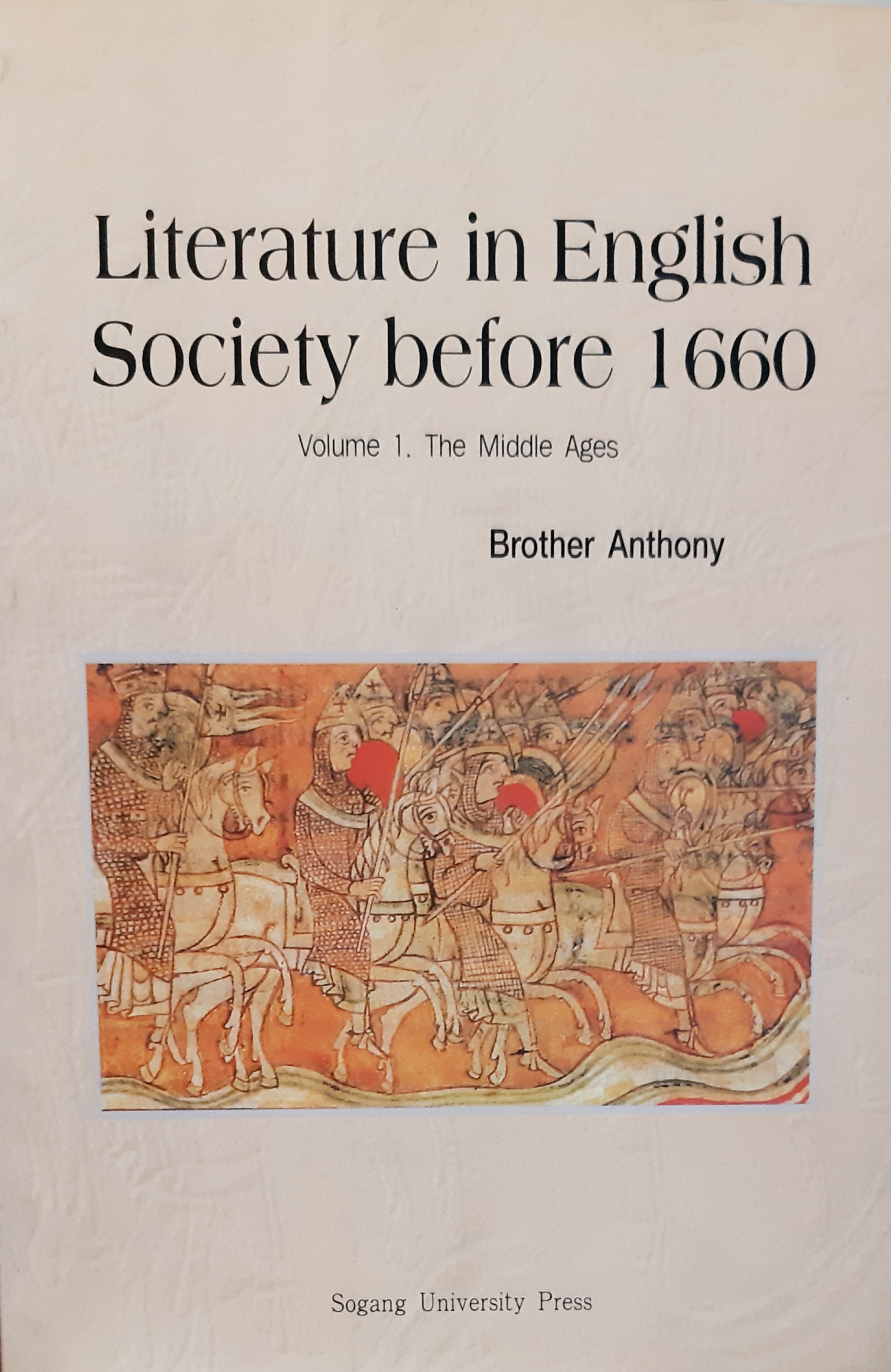|

Literature in
English Society Before 1660 A
Historical Survey Brother
Anthony, An
Sonjae Sogang
University
Press Seoul, Korea 1997
Contents Introduction
(below) 1.
Literature and Society before 1066 Caedmon's
Hymn Christianity
enters England Bede The
Germanic Inheritance The
Dream of the Rood Relations
with the European Continent The
Genesis Poems Heroic
Poetry Beowulf The
Elegies The
Vikings King
Alfred the Great5 Monastic
Revival From
Maldon to Hastings The
Celtic tradition: Ireland, Scotland, Wales 2. The
Middle Ages before 1300 Social
history The
Universities The
Church The
development of narrative literature Geoffrey
of Monmouth Layamon's
Brut Fine
amor The
Matter of Britain Tristan
and Iseult Marie
de France Chrétien
de Troyes Arthurian
Romance after Chrétien The
Matter of Rome and Antiquity Le
Roman d'Eneas Le
Roman de Troie Le
Roman de Thebes Alexandre
le Grand The
Matter of France The
Song of Roland The
Matter of England King
Horn Havelok
the Dane Sir
Orfeo Bevis
of Hampton and Guy of Warwick Other
narrative forms Fabliau
and beast-fable Lyric
poetry in France Lyric
poetry in England Le
Roman de la Rose Dante
Alighieri Social
and political history The
Black Death and the Peasants' Revolt Wyclif
and the Lollards The
Hundred Years' War Alliterative
poetry Wynnere
and Wastoure Pearl Piers
Plowman Alliterative
romances Sir
Gawain and the Green Knight5 Lyric
Poetry in England Lyric
Poetry in France Religious
Prose Julian
of Norwich Margery
Kempe 4.
Petrarch and Boccaccio, Chaucer and Gower Petrarch Boccaccio Geoffrey
Chaucer The
shorter works Troilus
and Criseyde The
Canterbury Tales John
Gower Poetry
after Chaucer Thomas
Hoccleve John
Lydgate (?1370-1449) Robert
Henryson William
Dunbar Charles
d'Orléans Renaissance
Humanism Saint
Anselm Scholasticism Raimon
Lull Nicolas
of Cusa Marsilio
Ficino Pico
della Mirandola Renaissance
Political Thought Niccolo
Machiavelli Mystery
Play Cycles The
Second Shepherd's Play Morality
Plays Everyman Skelton's
Magnyfycence Bale's
King Johan Interludes |
Introduction This book
surveys in a very general way the evolution of
English literature of the Middle Ages. It focuses on
as many individual works
and writers as possible, situating them in a broad
historical and social
context. Korean
students of English literature often have little
or no detailed knowledge of British history or
culture, yet they use histories
of English literature in which the main outlines of
English history are assumed
to be familiar. This leads to difficulties. On the
other hand, in many
histories of literature, the individual works are
assumed to be familiar and
nothing is quoted at length or explained. Again,
this causes problems. In Sogang
University, the main textbook for courses in
English Literature is the two-volume Norton
Anthology of English Literature.
This anthology is very useful, but the introductions
are often fragmentary and
unclear, while students in a survey course can do
almost nothing with the huge
extracts from the major works that the Anthology
provides. In the pages
that follow, surveys of and quotations from
as many works as possible are set in a narrative
about writers, works, and
their historical contexts, English and European. The
expected readership is of
undergraduate and graduate level, students in survey
courses as well as those
looking for general background information about a
particular period or writer.
Some may be surprised to find quite long discussions
of French or Italian
literature and philosophy; they are included because
it is not possible to
separate English literature from its European
context, the works in question
have all played a major role in England and should
be familiar to students. Given the
book's very general character, it has seemed
best to keep the bibliographical information to a
minimum. Each writer and
topic has been the object of innumerable studies.
Therefore each section or
chapter ends with a short list of recently
published works in which students
will find full bibliographical information for a
higher level of detailed
research, as well as more precise introductions to
each of the topics
mentioned. Every aspect
of English literature has been discussed at
great length by many scholars. This book is only a
general introduction written
in a deliberately simple style, the author could
never acknowledge in detail
the multiple sources he has been informed by at
every point. In addition, there
are so many different opinions about almost every
detail that it has seemed
better not to quote directly from critical works,
and not to use footnotes or
endnotes. Students
wishing to have a rather fuller degree of
concentrated information on a particular writer or
work may turn first to The
Oxford Companion to English Literature or a
similar encyclopedic work.
Beyond that, and the various general studies
indicated after each section or
chapter, there is no end to the variety of studies
available. It is a pity
that this book cannot provide pictures.
Many aspects of medieval culture, be it the
buildings, the clothing, or the way
of daily life, become much clearer from
photographs and illustrations. Students
are advised to look for illustrated histories of
the period while they are
studying. |